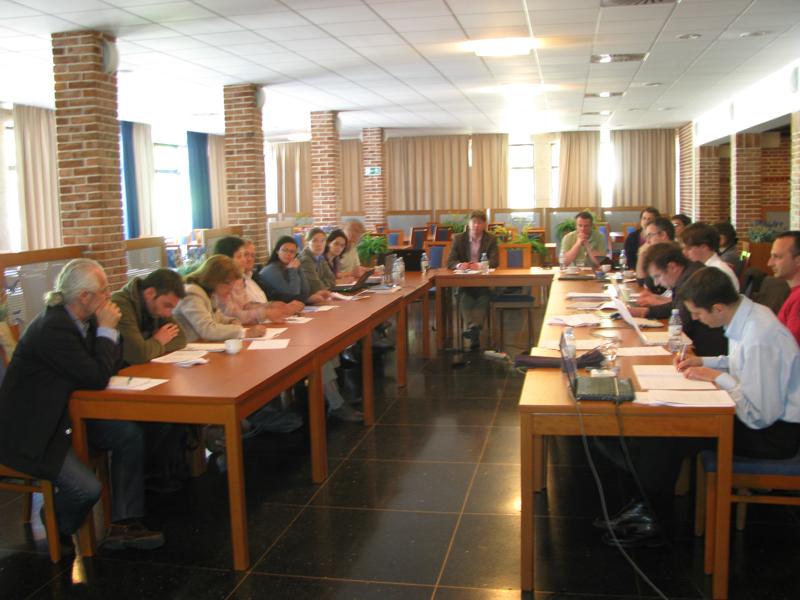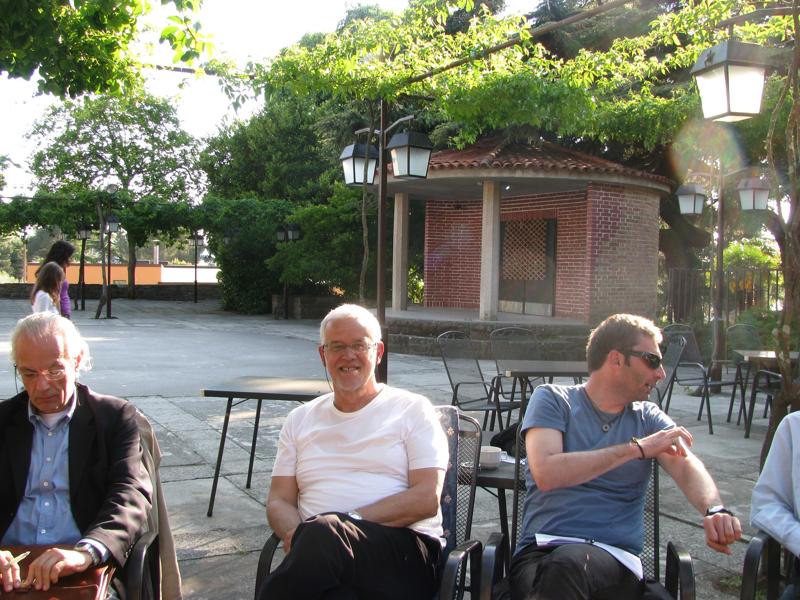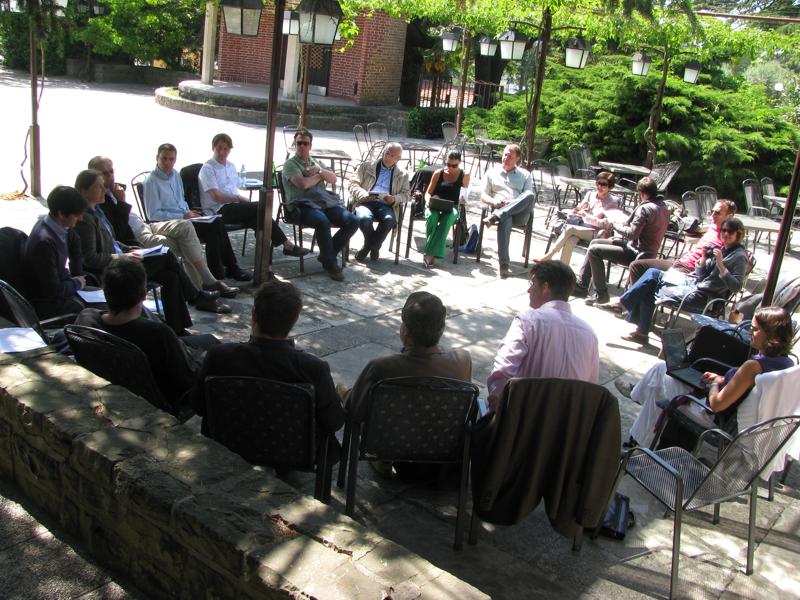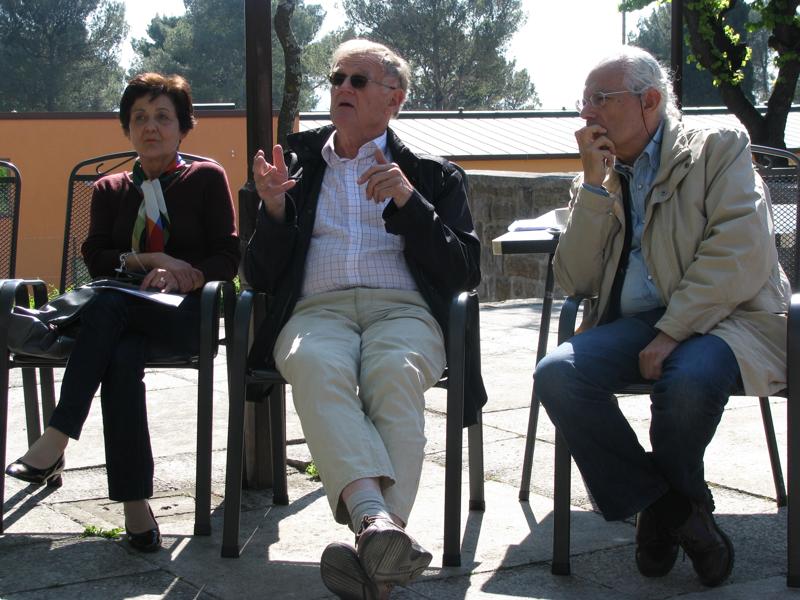The project explores how internationalisation affects modern, post-elite higher education systems in Europe, and in particular how it affects the relationships between differentiation, social equity, and performance of graduates in the world of work.
The main aims of the project are threefold:
- to analyse policy impact and policy implementation of contemporary European-level and global developments in relation to convergence and diversity in higher education;
- to examine the effects of these contemporary European-level and global developments on forms of differentiation, on the notion of social equity and on inter phase between higher education and the contemporary world of work in national higher education systems;
- to develop an understanding of the social and economic consequences of expanded and differentiated higher education systems both in the case of the Slovenian higher education system and more widely in the region of SEE.
Originally, the project has been developed within a consortium of researchers from EU countries as a part of a Collaborative Research Proposal for the European Science Foundation EUROCORES Programme. The proposal was assessed positively and recommended for funding. However, due to financial constraints the critical mass of participating countries was not reached and the project is now implemented on national bases only (funded by the Slovenian Research Agency ARRS, 2010 – 2012), and is accordingly adjusted.
Post-CHER Symposion 2012
The Past, Present and Future of Higher Education Research: Between Scholarship and Policy Making
University of Ljubljana, Slovenia, 13 September 2012
The European higher education landscape has changed dramatically over the last 25 years. In the early 1980s, speaking about “European” higher education was still more or less an abstraction. On one hand, the Iron Curtain made a substantial cut between education systems to the West and East; on the other, there were “European models” of national higher education rather than a “European higher education”. A quarter of a century later, the “European Higher Education Area”, spreading from Lisbon to Vladivostok, has been declared.
This dramatic change has been the culmination of ongoing policy developments, largely related to the internationalisation, Europeanisation and globalisation of higher education. To mention just a few key steps along this route: the decisions taken on the Erasmus (1986) and Tempus (1990) Programmes, the Maastricht Treaty of 1992 giving the green light to “Community Action” in the field of education and training, the Lisbon Recognition Convention (1997), the Bologna Declaration (1999) resulting in the Bologna Process, the EU Lisbon Strategy (2000) and the Lisbon Process and so on. These steps have had an enormous impact on policy making processes at both national and institutional levels.
These 25 years of change have been accompanied by a growing number of higher education research endeavours. Distinguished research centres have started to be established (e.g. INCHER, 1978; CHEPS, 1984), while in 1988 CHER (the Consortium of Higher Education Researchers) was founded. Gradually, the new research specialisation has been recognised and promoted across Europe as an important interdisciplinary field. In addition, the academic dimension higher education research has been directly or indirectly connected to the area of higher education policy making. Since the invention of “evidence-based policy making” such a connection appears quite normal, e.g. contemporary education reforms need ample support in terms of data and system analysis which can only be provided by research centres at universities or outside them. Universities not only provide research but also research training. Due to their relative autonomy they themselves need “evidence-based institutional policy making”. However, the relationship between higher education research and policy making – European, national or institutional – has never been simple.
What is the relationship between higher education research and higher education policy making in the past and in the future? This is the leading question of the CHER 2012 post-conference symposium and subsumes a number of issues to be discussed, e.g.:
- the impact of research on policy making (and vice versa);
- particular tensions that appear between research and (inter)national policy making;
- specific tensions between research and institutional policy making;
- a future research agenda on higher education in Europe;
- etc.
CEPS Sympósion 2011
Internationalisation and globalisation processes and their impact on national higher education systems: convergence and divergence, centres and peripheries
Ljubljana, November 23-25, 2011
The second CEPS Sympósion, organised within the research project DEP (Differentiation, equity, productivity: consequences of the expanded and differentiated higher education systems from the internationalization aspect) financed by the Slovenian Research Agency (ARRS) aims to examine the impact of Europe-wide and larger international and global developments on national higher education systems. We would like in particular to upfront issues of convergence and diversity in higher education and of the relationship of centres and peripheries in higher education.
Several policy discourses (often mutually interlinked or overlapping, e.g. the Lisbon Strategy; the Bologna Process; the academic cooperation; the “global dimension” etc.) have appeared and have been employed during the last decade; all of them have been recognisable within the Bologna Process, understood here as an open policy forum. Until the end of the decade, diverse interpretations of the European “concerted” higher education policy – related to diverse national needs, traditions etc. – have also appeared and have been employed in national and regional contexts. In 2010, the Bologna Process reached its main goal: to “consolidate” (as phrased by the Bologna Declaration) the European Higher Education Area. Indeed, national higher education systems looks much more convergent today than ever before but a cluster of new questions is emerging: questions about the nature and quality of European higher education, real impact of its recent reforms as well as about its near future.
Working on these aspects it is necessary to identify organising ideas which lie behind particular policy discourses and examine their logic in a historical perspective of the last decade and as reflected in a dichotomy convergence vs. diversity. Further, we need to compare and understand the main trends in changes in individual national systems which have been predominantly influenced by the Europeanisation processes; we also need to understand their effects with regard to changes in horizontal and vertical differentiation. Within these frames, it also looks important to focus to differentiation aspects and the extent to which international student and labour flows are altering national patterns of equity and productivity regarding higher education graduates and to a typology of student mobility regarding their places of study (at home; temporarily or whole degree programme abroad) and work destination (at home or abroad; in a national or an international job). Last but not least, it is necessary to examine the two-way relationship of the emerging European Higher Education Area with other parts of the world and understand its feedback and policy implications of the discussion on higher education and social change.
From today’s point of view, it seems that – at least an inner – tension between “European” convergence and “national” diversity persists (and perhaps becoming tense). Different interpretations of the “concerted” policy and diverse implementation processes at the national or regional level (enhanced by a mix of different discourses as well as “local” political and ideational pressures behind these processes) seem to produce a new “divergence”. A dichotomy of centres and peripheries in European higher education might indicate possible elements of it; a dichotomy which hasn’t received much attention during the last decade. The EHEA is not a homogenous area; on the contrary. Changes in individual national systems, influenced by the Europeanisation and globalisation processes, seem to produce quite different impact in different European countries and regions. One hand, different nature of “big” and “small” higher education systems seems to demand different action, different structures and different implementation of the “common policy”; even more, it produces certain tensions (e.g. organisation of the system and support institutions; incoming and outgoing mobile students and staff; attractiveness of national universities on various league tables; etc.). It looks like an “invisible hand” pushes European countries to be either “policy exporters” or “policy importers”. On the other hand, it seems that tensions are not merely a reflex of the size of a national higher education but a reflex of more substantial social, economic and political processes in Europe and worldwide.
Presentations:
If higher education is at the heart of Europe 2020, why do European universities fair poorly in global rankings? A review of policy responses
Ellen Hazelkorn
The arrival of global rankings in 2003 was the clarion call for urgent reform or “modernisation” of European higher education. The results of Shanghai’s Academic Ranking of World Universities and Times Higher Education QS World University Ranking, first published in 2003 and 2004, respectively, challenged the perceived wisdom about the reputation and excellence of European universities especially when placed alongside the Lisbon strategy’s objectives. The German Ministry of Education and Research put the situation in context:
We have a lot of very good universities across the board in Germany, a high average standard, but what we lack are really top universities … The latest ranking table clearly shows why it is that Germany needs top universities (Dufner, 2004).
A year later, June 2005, the German government launched the Exzellenzinitiative (Initiative for Excellence). Similarly worried by France’s overall weak showing in the rankings, the French Senate issued a report arguing its researchers were disadvantaged in favour of English-speaking institutions (Bourdin, 2007–2008). In 2008, under the auspices of the French Presidency of the European Commission, a conference was organised championing a new EU ranking (EU Presidency, 2008). Europa 2020 restated the challenge: “Europe must act: … According to the Shanghai index, only two European universities are in the world’s top 20” (European Commission, 2010, 2011). This paper will trace the impact that rankings are having on European policy and reflect on some EU and individual national responses. In particular it will examine the change in emphasis from supporting equity across higher education system to policies which seek to emphasize hierarchical or reputational differentiation.
Reconciling Republican ‘Egalité’ and Global Excellence Values in French Higher Education
Leon Cremonini, Paul Benneworth, Hugh Dauncey, and Don Westerheijden
Building prestigious higher education is today one of the main drivers of public policy. Many governments have initiated policies to support or create élite universities in the belief that they will boost their system’s prestige in the world. Despite the assumption that all countries will make similar world class university policy choices, a growing body of criticism points out that élite universities are in fact an ideal type drawn from a narrow pool, Anglo-American in nature, and currently dominant. By examining how a system with different public norms and values managed excellence policies, the chapter considers how the idea of “World Class University” might be generalized. The chapter looks at excellence initiatives in France to explore (a) how world class university policies are introduced in a system with values which contradict those embodied by today’s prevailing notion of global excellence and (b) whether these initiatives benefit the system as a whole.
Higher Education, Politics and Demographics in the Times of Educational Contraction
Marek Kwiek
Dramatically changing demographics in Poland, possibly leading to decreases in enrolments from about two million students today to about 1.2 million students in 2025, introduces new policy dilemmas. We expect public policy for higher education in the times of expansion to be fundamentally different from public policy in the times of contraction. The paper explores the question of inequality in access to higher education with reference to the past two decades of expansion and to the expected decades of contraction of the system. The era of contraction seems unexpected in knowledge-economy policy discourse which generally ignores sharply falling demographics, relevant for higher education systems in only several OECD economies, Poland included. The two major parameters explored in the paper are demographics and politics. There are no countries in the European Union in which similar demographic shifts lead to shrinking student populations to a comparable degree. Therefore Poland provides an inspiring case study.
Events of International Mobility in the Life Course: Findings of Graduate Surveys
Ulrich Teichler
Graduate surveys, in contrast to educational and labour statistics, can provide information on the proportions of persons having been mobile at least once at the various stages of the life course from birth to some years after graduation. However, the results of available studies are cannot to described and interpreted easily as a consequence of heterogeneous definitions and measurements, as an overview on comparative graduate surveys in Europe shows. Altogether, the event of mobility in the life course is amazingly frequent.
Convergence in European Higher Education: is it really working. Theoretical and empirical notes
Giliberto Capano
Convergence in European HE is a mantra since a couple of decades. But is t really working? More specifically: what really means convergence in HE? The paper will deal with these questions by focusing on the literature on internationalization, Europeanization, and diffusion which has incredibly flourished in comparative public policies and on the literature on policy change, to develop a framework to analyze the convergence “problem” in HE. This “convergence” dynamics are theorized as a process of policy change in which external pressures and internal factors interact thanks to agency, that is the real actions of policy-makers. The framework will be shortly applied in comparative perspective (3 WE countries and two EE countries).
Universities and ‘their’ communities: Nation-states, supra-national entities and post-national constellations?
Jana Bacevic
Traditionally, universities as institutions have been ascribed a pivotal role in the development of nation-states in Europe (e.g. Enders, 2004; Ruegg, 2004). Two other forms of ‘communities’ have been associated with universities: one is the international, cosmopolitan ‘community of scholars’ whose roots can be traced back to the middle ages; the other is the ‘local community’, whose needs are supposedly served by smaller, regional universities or colleges. However, with the political changes in Europe in the past 20 years (‘unification’ of the West and the East, expansion of the European Union bringing into practice political architecture needed to support ‘post-national’ constellations, but also – some would say reverse – trends such as conflicts and the creation of new nation-states in the Balkans and the Caucasus) and, at the same time, transformation of the ‘traditional’ role(s) of university and redefinition of its relationship with the nation-state (Amaral, Neave, Musselin, & Maassen, 2009), one must wonder whether the relationship between universities and ‘their’ communities has transformed as well, and how (cf. Enders, 2004; Kwiek, 2006). In other words, what is the society that the university is supposed to serve (cf. Olsen & Maassen, 2007)?
This contribution investigates discourses on the roles of university in society, and the relationships between the two. By way of illustration, it focuses on three ‘types’ of universities in Central, Eastern and South-Eastern Europe: (a) the ‘traditional’ flagship institutions and the transformation of their role during and after transition; (b) ‘supranational’ institutions such as the Central European University, European Humanities University and Southeast European University and their roles in the region; and (c) ‘ethnic’ universities developed after the conflicts in the Balkans with the aim of providing for higher education for particular ethnic or linguistic minorities (Babes-Bolyai University, International University of Novi Pazar, University of Prishtina in (Kosovska) Mitrovica, Tetovo State University etc.). The contribution aims not only to show how the ideas of the roles of university in society are being transformed, but also to point to the ways universities shape and structure the identity of communities – local, national and/or ‘post-national’ – they ‘belong’ to.
Amaral, A., Neave, G., Musselin, C., & Maassen, P. (Eds.). (2009). European Integration and the Governance of Higher Education and Research. Dordrecht: Springer.
Enders, J. (2004). Higher education, internationalisation, and the nation-state: Recent developments and challenges to governance theory. Higher Education, 47, 361–382.
Kwiek, M. (2006). The University and the State: A Study into Global Transformations. Frankfurt Am Main: Peter Lang.
Olsen, J., & Maassen, P. (2007). European debates on the knowledge institution: the modernization of the university at the European level. In P. Maassen & J. Olsen (Eds.), University Dynamics and European Integration (pp. 3-23). Dordrecht: Springer.
Ruegg, W. (2004). A History of the University in Europe (Vol. III). Cambridge: Cambridge University Press.
Higher education differentiation and the myth of meritocracy: the case of the UK
John Brennan
The paper will argue that the vertical differentiation of UK higher education has been growing steeper in recent years and that this reflects higher education’s role in limiting social mobility and reproducing significant levels of social inequality. The legitimising claims of the notion of meritocracy, and the relationship between social and academic elitism, will be considered in this context. The UK national context for differentiation will also be set in the wider international context of league tables and student (and staff) mobility. The implications for both higher education institutions and their users will be considered.
The conflicts between domestic and global perspectives on institutions in small communities.
Jon-Torfi Jonasson
The paper will show that the development of HE in a very small community has all the characteristics of the development seen in much larger systems, vis-a-vis the rate of participation, academic drift, strengthening of graduate programmes, institutional ambition, ranking discourse and tension between disciplines. But there are problems of size, of homogeneity but in particular there is a debate about mission, i.e. to what sense should every individual institution serve society and exhibit its responsibility in every or most programmes; in other words to what extent should HE pay all or most attention to its local stakeholders and to what extent should they allow themselves to look to more distant stakeholders, such as the global society or even science. The paper will argue that there is a very small difference between the discourse and the dynamics of HE in small and large systems, but the definition of stakeholders will be more difficult in the smaller systems and cause tension less evident in the larger systems.
Are Europeanisation and diversity in higher education linked? The case of Austria: From homogeneity to diversity in higher education
Elsa Hackl
Traditionally, in Austria, higher education institutions have enjoyed the same status and their courses and degrees have been regarded as being equivalent. The most important reforms before Austria’s accession to the European Union, the study laws at the end 1960s and the University Organisation Act of 1975, increased and completed this uniformity and homogeneity. Only in the 1990s they began to crumble. At first, in 1993, a new sector in higher education was set up, geared towards the needs of the economy, and differing in organisation and funding from universities. A few years later the establishment of private and foreign universities was legalized and eventually, in 2002, a new law on universities diminished their uniformity and made an end to homogeneity in higher education. This paper is to discuss the role of measure at the European level for these developments. Did they cause or enhance diversification? Did the timely connection between the Maastricht Treaty of 1993 that established a Community competence in higher education, Austria’s accession to the European Union in 1995 and Austria’s first EU presidency and the Bologna Declaration of 1999 matter?
Re-orienting Croatian higher education: internationalisation and resistance
Danijela Dolenec, Karin Doolan
In the past decade there have been two notable moments in Croatia’s higher education legal framework. The first one relates to the passed Croatian Scientific Activity and Higher Education Act from July 2003 and the second to the unsuccessfully proposed Higher Education and University Acts of 2011. Although differing in adoption success and divided by a seven year gap, what these Acts have in common is their claimed inevitability and explicit internationalisation agenda. According to Croatian policymakers, if Croatia wants to be part of the EU it is necessary for it to align its national higher education area with that of the European higher education area: in 2003 this alignment primarily took the form of Bologna objectives relating to the organization of studies and comparability of degrees, whereas in 2011 the emphasis was on the reform of university governance and funding.
This paper opens with a discussion of the mentioned 2003 and 2011 Acts’ policy formulation process in terms of the top-down/bottom-up dichotomy in policy making. Although this dichotomy is challenged as too narrow for capturing the complexities involved in policy formulation, it is nevertheless argued that this process predominantly took the form of a top-down approach which included the relevant Ministry and international actors. Central concepts drawn on include “autonomy”, “policy import” and “centre-periphery” power relations shaping higher education policy formulation in Croatia. The paper then moves on to offer a discursive analysis of the passed and proposed Acts in terms of international trends and continues with a discussion of their implementation. Drawing on Sabatier’s (1986) point about how the effective implementation of legal objectives depends on several variables including supportive interest groups (stakeholders), the paper highlights stakeholder responses to the largely top-down approach in policy formulation in Croatia. In terms of the 2003 Bologna guidelines’ implementation the disinterestedness and/or resistance of stakeholders is identified as contributing to what McLaughlin (1991, as cited in Ball 1997: 261) refers to as “reorientation change”, which absorbs the language of reform and not its substance, as opposed to “colonisation change”, which involves “major shifts in the cultural core of the organisation”. In the paper this response to Bologna process guidelines is supported by interviews conducted with lecturers and management staff from the University of Zagreb during the academic years 2006-2007 and 2011-2012. In terms of the 2011 Acts, resistance from the academic community joined with oppositional political party support is identified as contributing to the Acts not even reaching the implementation phase. In other words, the 2003 Act is taken as exemplifying a case of convergence with international trends at the policy formulation stage and diversity in policy implementation, whereas the 2011 Acts exemplify stakeholder resistance at policy formulation phase. Provided evidence suggests that stakeholders mediate and interact with “imported policies” which raises the question of higher education policy implementation convergence in light of differing higher education and institutional histories.
Europeanization of higher education systems and institutions. Theoretical expectations and empirical findings
Martina Vukasović
The Bologna Process is often seen as “possibly the deepest and most far reaching higher education reform process since World War II” (Kehm 2010:530). However, to what extent the Bologna Process has really affected higher education systems and institutions and why we have such diversity in intepretation and implementation (Westerheijden et al. 2010) is still not fully explained. This paper will discuss the possibilities of using different models of Europeanization developed on the basis of research done in other public policy areas (Sedelmeier 2011) to explain patterns of convergence and divergence of national higher education policy and changes in higher education institutions. The paper will in particular discuss Europeanization of higher education in Central, Eastern and South-Europe, contrasting theoretical expectations with preliminarly empirical findings and this implications of this for diversification across and within higher education systems and institutions.
References:
Kehm, B. (2010). “Editorial.” European Journal of Education, 45(4), 529-534
Sedelmeier, U. (2011). “Europeanisation in new member and candidate states.” Living Reviews in European Governance, 6(1).
Westerheijden, D., Beerkens, E., Cremonini, L., Huisman, J., Kehm, B., Kovač, A., Lažetić, P., McCoshan, A., Mozuraityte, N., Souto Otero, M., de Weert, E., Witte, J., and Yagci, Y. (2010). The first decade of working on the European Higher Education Area: Executive summary, overview and conclusions.
Splendid Little Autarchy. Some notes on higher education reforms in Slovenia
Pavel Zgaga
It is usually presumed that smaller, marginal or peripheral higher education systems are rather passive actors in the internationalizing processes and condemned just to implement policy paradigms which have been developed in large systems or at international level (“centres”). Nevertheless, it is possible to find evidence which show that they can also “resist” these influences. This “resistance” is mainly accelerated by circumstances (physical and cultural, e.g. population, the academic critical mass, traditions, etc.) which are usually overlooked and/or ignored in the “central” paradigms. A collision of “centre” and “periphery” often leads toward attempts to reinterpret and translate policy paradigms for “home use”. This may produce unusual results as it will be demonstrated by analysing some aspects of the Slovenian higher education reforms.
EQUNET/CEPS Sympósion 2010
Ljubljana, November 23-24, 2010
Achieving true equity within Higher Education, despite being high on the education policy agenda for years, continues to remain a significant challenge for policy makers, who, despite years of initiatives, have not yet managed to make large enough inroads into the problem. To this end, two consortia researching the topic – the EQUNET consortium bringing together 8 partners from 6 EU countries, and the DEP project team have decided to merge efforts to create a one-of-a-kind instrument to synthesise the current debate and suggest ways forward.
The EQUNET/CEPS Symposion is a think-tank style event, which will bring together researchers from both the projects together with the leading academics in the field for an intensive 3-day signature event intended to consider visionary and innovative policies to deal with the equity gap, and get away from the staid iterative and gradual process that has characterised EU policymaking and left millions stranded without better life-opportunities.
The themes of the meeting have been chosen by the visionaries themselves, in line with their views of the most pressing problems and the most effective solutions, with a format which will allow 6-8 ideas to be presented over the 3 days, with each idea needing to face the test of an expert audience, but also with the ability to be enhanced and matured by the audience, and for a few select ideas, to be further examined in detail by the research projects sponsoring the event.
Rather than a one-off event, the meeting will form the basis of a series of actions on equity – networking these experts together to form a joint consensus and joint voice on how to meet the challenges of Higher Education today. To this end, the networks will sustain a private social community amongst these researchers and experts, and will further tap their knowledge and expertise through participation in a DELPHI study being sponsored by the EQUNET network.
The results and recommendations, together with presentations from all participants on their chosen themes and challenges will be made available publicly after the event.
Presentation Abstracts:
The topics are divided into three themes, each with several speakers:
Theme 1: Conceptualising Equity for Policymaking
How is equity in higher education understood?
Zdenko Kodelja, Educational Research Institute, Ljubljana
Full text >>
Theory of practice, mixed methods research and the development of social sensitivity accreditation in HE
Karin Doolan, Institute for Social Research in Zagreb
ppt MS Power point presentation >>
Segmentation in HE – a frequently overlooked form of the reproduction of inequality
Slavko Gaber & Veronika Tašner, CEPS, University of Ljubljana
ppt MS Power point presentation >>
Theme 2: Universal Higher Education, diversity, society and equity
Contradictory functions in Higher Education’s contribution to social equity
John Brenan, CHERI, The Open University, London
ppt MS Power point presentation >>
Degrees, Jobs and Status in Society – the tension between Meritocracy and Euality
Ulrich Teichler, INCHER, Universität Kassel
ppt MS Power point presentation >>
University – a Stairway to Heaven and the Graveyard of Hopes
Voldemar Tomusk, International Higher Education Support Program, Open Society Foundations, London
Who gets a degree? Access to tertiary education in Europe 1950-2009
Aleš Bartušek, Education Policy Centre, Faculty of Education, Charles University
ppt MS Power point presentation >>
Theme 3: Equity in Higher Education systems, mechanisms and financing
Return-based contributions to finance higher education – a temporary graduate tax
Dieter Dohmen, FiBS Berlin
ppt MS Power point presentation >>
Strategies for ensuring Equitable Access to HE for immigrant groups
Leon Cremonini, CHEPS, University of Twente
ppt MS Power point presentation >>
DEP Colloquium 2010 & 2011
International DEP Colloquium 2011:
Differentiation of higher education in an internationalised/globalised context
Ankaran, Slovenia, 5 – 8 May 2011
Proceedings
International DEP Colloquium 2010:
The Future of (European) Higher Education
Ankaran, Slovenia, 7 – 8 May 2010
A selection of papers from the international seminarA2010
Photogallery: DEP Colloquium 2010




